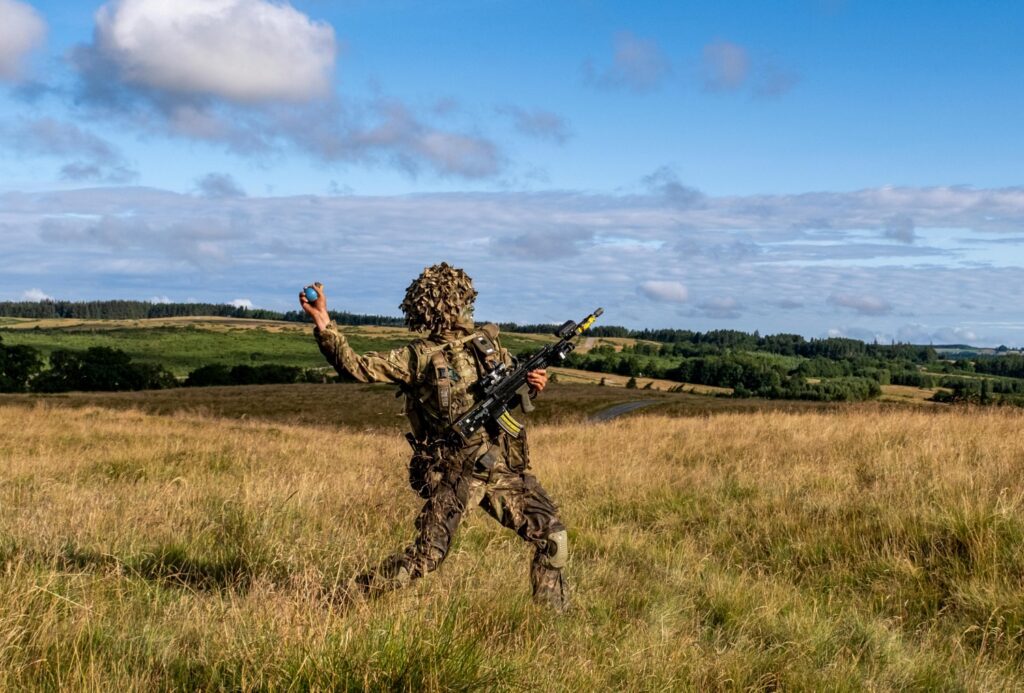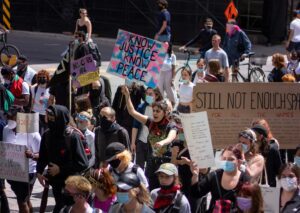In guerrilla warfare, fighters rely on speed, surprise, and mobility because their enemies are stronger, so they would lose if they fought fair and square.
The word “guerrilla” basically means “little war.” It comes from Spanish “guerra,” meaning “war,” and the ending -illa makes it “small.”
At first, it described the way Spanish fighters battled Napoleon Bonaparte’s army by using surprise attacks, ambushes, and hit-and-run.
Napoleon Bonaparte rose to power during the French Revolution and conquered much of Europe in the early 19th century.
Later, it started being used for both the style of fighting (guerrilla warfare) and the fighters themselves (guerrillas).
You will learn in this article about the tactics guerillas employ, and the wars throughout history where guerilla warfare was used.
Guerrilla Warfare Is Carried Out by Non-state Fighters
Guerrilla warfare is used by fighters not part of a conventional army. They could be local militias, rebel groups, or insurgents.
The state doesn’t support them, so they rely on local communities for resources, which can provide them just enough. Sometimes, only little.
This is why they avoid direct confrontation. They can’t afford to waste what they have, and they know they can’t defeat their enemies.

Used to Wear Out Enemies, Not Defeat
The main goal of guerrilla warfare is to wear down the enemy over time rather than to destroy them outright.
Guerrillas achieve this through repeated small attacks, which slowly drain the enemy’s resources and energy.
Conducted in Places Where Fighters Can Hide
Guerrillas fight in their own homeland, so they understand the terrain better than the enemy. This gives them a big advantage.
Some guerrilla groups operate in foreign areas, especially if their goals are political or ideological.
They move through forests, mountains, jungles, or urban areas because they can stay hidden and blend in there.
Common Guerrilla Warfare Tactics
Guerrillas want to exhaust their enemies by constantly surprising them. Learn about the common guerrilla warfare tactics below.
Ambushes
When planning for ambushes, guerrillas choose the timing and position that maximizes damage while minimizing their own risk.
Ambushes usually involve sudden gunfire, explosives, or cutting off escape routes to create confusion, disruption, and panic.
Hit-and-run Attacks
A hit-and-run attack is a brief, targeted strike on the enemy followed by immediate withdrawal. Guerrillas hit, and then run.
And they need to run quickly because they will be forced to face the enemy if they linger and get caught in a direct fight.
Sabotage
If they get the chance, guerrillas might purposely damage their enemy’s equipment, roads, or supplies to slow them down.
Guerrillas use simple tools for sabotage, such as explosives, knives, firearms, improvised devices, fuel, or ropes.
This way, the enemy wastes time and resources fixing things and guarding them, which makes them weaker in the long run.
Raids
Raids are used to steal weapons and other supplies, or destroy installations. They last only a short time before withdrawal.
Sniping
Guerrilla snipers usually target the most powerful or the ones who hold high positions to scare their enemies.
They may operate alone or in small teams.

Booby Traps
Booby traps require minimal manpower and can damage enemy forces without direct confrontation, so they are truly useful for guerrillas.
They are hidden explosives or devices designed to injure or kill enemy soldiers. They can be placed along roads, in buildings, or near supplies.
Misinformation
Guerrillas may spread false information or use deception to confuse and mislead their enemy, and make them waste resources.
Some examples of misinformation are distributing leaflets claiming victories that didn’t happen and exaggerating the size of their force to intimidate.
Notable Wars Where Guerrilla Warfare Was Used
Guerrilla warfare has been used all throughout history. Below are some notable wars where it was used.
American Revolution (1775–1783)
The American Revolution was when the thirteen American colonies decided they’d had enough of British rule and fought to become independent.
Early militias could not win in open-field battles because the British army was larger, better trained, and better equipped.
Britain is regarded as the leading colonizer in history, having controlled the largest empire with territories worldwide.
So, they used guerrilla tactics. They ambushed, hit and ran, and attacked on supply lines before they could respond to weaken them gradually.
Spanish Peninsular War (1808–1814)
The Spanish Peninsular War against Napoleon Bonaparte was the first war where the term “guerrilla” was formally used, meaning “little war.”
It happened because Napoleon tried to make his brother Joseph the king of Spain, and the Spanish people resisted his takeover.
Civilians and local militias banded together and employed guerrilla tactics.
Philippine Revolution (1896–1898)
To break free from Spanish rule, which was oppressive, Filipinos started what is now known as the Philippine Revolution.
Since they were poorly armed and outnumbered, they used guerrilla tactics to strike quickly and disrupt the Spaniards.
Philippine-American War (1899–1902)
After Spain gave up the Philippines to the United States, Filipinos kept fighting, this time against American troops.
The United States paid $20 million to Spain for the Philippines under the Treaty of Paris in 1898.
The Americans eventually took control, but guerrilla warfare caused heavy losses and slowed down their full occupation.

Irish War of Independence (1919–1921)
During the Irish War of Independence, the Irish Republican Army was outnumbered, so they used guerrilla tactics to fight the British.
Their operations were coordinated through small, decentralized units that could strike quickly and then disappear into the countryside.
In the end, it forced Britain to negotiate, which led to the Anglo-Irish Treaty and gave Ireland partial independence.
Chinese Civil War (1927–1949)
After the fall of the Qing dynasty, the nationalists and the communists were fighting over who should run China.
Since the nationalists were stronger, the communists turned to guerrilla tactics, which helped them win in the end.
This eventually led to the creation of the People’s Republic of China.
Cuban Revolution (1953–1959)
Fidel Castro and his supporters used guerrilla warfare to overthrow the Batista regime in Cuba. They operated in the Sierra Maestra mountains.
Vietnam War (1955–1975)
During the Vietnam War, the Viet Cong used guerrilla warfare to resist the United States’ and South Vietnam’s forces.
Many historians consider the Vietnam War the most wasteful war for the United States because it was long, but unsuccessful.
They set up ambushes, booby traps, and hit-and-run attacks, using tunnels and the terrain to stay hidden.
These tactics were used throughout most of the war to wear them down.
Afghan-Soviet War (1979–1989)
The Mujahideen used guerrilla tactics to fight the Soviets, who wanted to support the communist government that was in power at the time.
Their units were scattered and operated independently, so they couldn’t be defeated with a single strike.
The Soviets were forced to expend significant resources and suffer continuous casualties, eventually making occupation too costly.

Guerrilla Warfare Is Used to Resist, Survive, and Fight a Stronger Enemy
Guerrillas fight not because the government forces them to. Most guerrilla forces, if not all, are not state-supported.
They do it because they want to protect their communities, land, or way of life from outsiders they see as threats.
They feel a strong sense of duty because they are part of the community, and their families’ safety is directly at stake.










